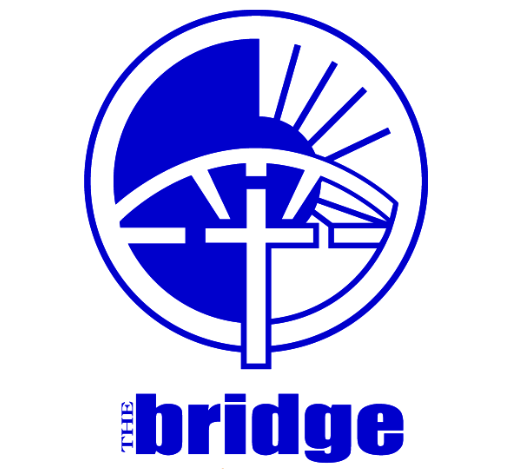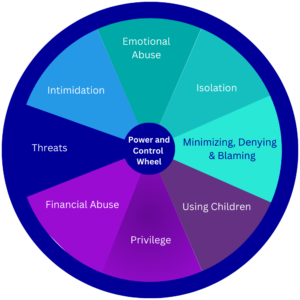Power and Control Wheel: Recognizing and Breaking the Cycle of Abuse
By Tammie Nielsen
Domestic violence and abuse are pervasive issues that infiltrate every layer of society, cutting across socio-economic, racial, and cultural lines. At the heart of understanding and addressing this complex problem lies the Power and Control Wheel, a crucial tool developed to illuminate the various tactics abusers use to maintain power and control over their victims. By dissecting the Power and Control Wheel, we can better understand the dynamics of abuse, recognize the signs, and take steps toward prevention and intervention.
The Origin of the Control Wheel
The Control Wheel, also known as the Power and Control Wheel, was developed by the Domestic Abuse Intervention Project in Duluth, Minnesota, in 1984. It was created based on the experiences of survivors of domestic violence, reflecting the real-life tactics abusers use to exert dominance over their partners. The wheel comprises eight segments, each representing different forms of abusive behavior that collectively contribute to a pattern of control and abuse.
The Segments of the Control Wheel
- Using Intimidation: Abusers often use intimidation to instill fear and compliance. This can involve threatening looks, actions, or gestures, smashing objects, destroying property, or displaying weapons. The purpose is to create an environment of fear and submission, making the victim feel constantly on edge.
- Using Emotional Abuse: Emotional abuse is a powerful tool. It includes name-calling, put-downs, playing mind games, humiliating the victim, and making them feel guilty. This form of abuse erodes the victim’s self-esteem and sense of self-worth, making them feel unworthy of respect or love.
- Using Isolation: Isolation tactics are designed to remove the victim from external support systems. This can involve controlling what the victim does, who they see and talk to, where they go, and limiting their outside involvement. By isolating the victim, the abuser makes it more difficult for them to seek help, gain perspective on their situation and in some instances makes it more difficult for the abused to recognize the situation as abusive.
- Minimizing, Denying, and Blaming: Abusers often minimize the severity of their actions, deny the abuse altogether, or blame the victim for causing it. This manipulation distorts reality, making the victim doubt their experiences and believe they are responsible for the abuse.
- Using Children: When children are involved, abusers may use them as a means of control. This can include making the victim feel guilty about the children, using the children to relay messages, or threatening to take the children away. The abuser exploits the victim’s love and concern for their children to maintain control.
- Using Privilege: In relationships where gender dynamics play a role, abusers may use gender to assert dominance. This involves treating the victim like a servant, making all the major decisions, and defining roles in a way that subjugates the victim. Implying traditional gender roles are inherently dominate and submissive roles.
- Using Economic Abuse: Economic abuse restricts the victim’s access to financial resources, making them financially dependent on the abuser. This can involve preventing the victim from getting or keeping a job, controlling their income, and giving them an allowance. Economic abuse traps the victim in the relationship by creating financial barriers to independence.
- Using Coercion and Threats: Coercion and threats are direct methods of control. This can include threats of harm to the victim, their loved ones, or themselves (e.g., threats of suicide) or even a family pet. It can also involve forcing the victim to engage in illegal activities, threatening to report them to welfare agencies, or using other forms of blackmail.
Recognizing the Signs
Understanding the Control Wheel is vital for recognizing the signs of abuse, whether in one’s own relationship or in others. These tactics often occur subtly and progressively, making it difficult for victims to realize they are being controlled. It’s crucial to pay attention to behavior patterns rather than isolated incidents, as the cumulative effect of these tactics creates a pervasive environment of control and fear.
Breaking the Cycle of Abuse
Breaking the cycle of abuse requires a multifaceted approach, including awareness, support, and intervention. Here are some steps to consider:
- Educate Yourself and Others: Knowledge is power. Educating yourself about the dynamics of abuse and the tactics used by abusers can help you recognize the signs and support others in similar situations. Share this knowledge with friends, family, and community members to raise awareness.
- Support Survivors: Offer a non-judgmental and supportive presence to those experiencing abuse. Listen to them and encourage them to seek professional help and connect them with resources such as hotlines, shelters, and counseling services.
- Advocate for Change: Get involved in advocacy efforts. This can include supporting policies that protect victims, funding for support services and initiatives that promote healthy relationships.
- Empower Victims: Empower victims by helping them regain control over their lives. This can involve assisting them in creating safety plans, accessing financial resources, and finding safe housing. Empowerment is about restoring the victim’s autonomy and self-worth.
- Promote Healthy Relationships: Encourage and model healthy relationship behaviors based on mutual respect, love, and communication. Educate young people about the importance of consent, boundaries, and recognizing abusive behaviors.
Conclusion
The Power and Control Wheel is a powerful tool for understanding the multifaceted nature of domestic abuse. By breaking down the various tactics used by abusers, we can better recognize, respond to, and prevent abusive relationships.



